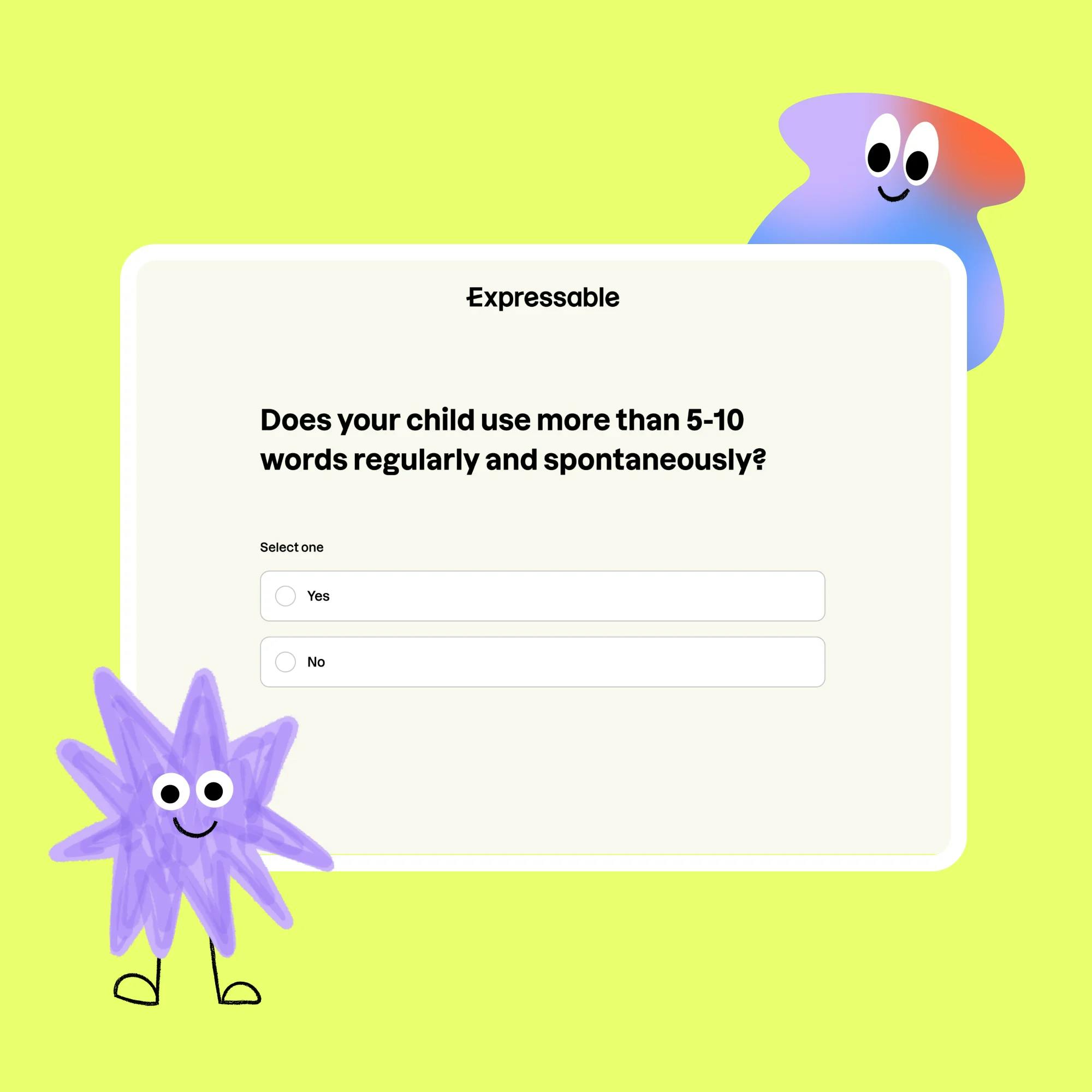As a parent or caregiver, you want to ensure your child is eating a full, healthy diet. While some kids seem to eat all foods from the start, others have more difficulty learning to expand their diet.
You may think of this as simply picky eating. But how do you know if your child needs feeding therapy? When a child has severe negative feelings or reactions toward certain foods, or if they eat a very limited diet, sensory issues could be to blame. This is known as sensory food aversion. In these cases, feeding therapy can be a big help.
Let’s take a look at what sensory aversion is, signs of sensory issues around food, and how feeding therapy helps kids with food aversions.
Expert feeding support for kids
Feeding therapy helps make mealtimes safer and more positive. Our feeding program supports your family from the comfort of your home.
 Get started
Get startedWhat is sensory food aversion?
You may have heard the term “sensory aversion” if you’ve done research about picky eating in kids. But what does it mean to have sensory aversion to food? Sensory aversion is when a person has problems with the sight, smell, taste, or texture of food.


What are signs and symptoms of sensory food aversion?
There are some symptoms of sensory aversion to look for. Kids with sensory aversions to food may show the following behaviors:
Seem grossed out by looking at a new food on their plate
Feel uneasy from the smell of a new food
Refuse to try or eat much of certain kinds of flavors, like savory, spicy, etc.
Dislike certain textures, such as the texture of meat or anything juicy or stringy like fruit or vegetables
Sensory aversions can look different in different kids. Some children may have many types of sensory aversions, and some may have just a few. Some children may show big reactions to foods they don’t like, while others may be more quiet in their refusals.
Some children may show big reactions to foods they don’t like, while others may be more quiet in their refusals.
No matter the severity of a food aversion, we want kids to be able to eat a wide variety of foods, as well as an adequate amount of food. It’s important to observe your child and note anything you see. Chances are, if there are any aversions present, you’ll catch on to them.
Here are some other signs of sensory aversion that kids may demonstrate:
Frequent gagging
Covering the mouth or nose and refusing food
Spitting out food
Negative reactions or anxiety around eating and mealtimes

At what age do children develop sensory aversions?
Sensory aversion to food can start at any point. For some children, it seems to be there from birth. They may have difficulty drinking from a bottle, then have more difficulty as they begin eating foods.
Other times, food aversions seem to begin at a later age. If your child is demonstrating sensory aversions at any point, it’s important to see a speech therapist who specializes in feeding, also known as a feeding therapist.
What is childhood feeding therapy?
Pediatric feeding therapy helps children who have some type of difficulty with the physical act of eating or swallowing. Feeding therapy can help make mealtimes easier and more enjoyable.
Childhood feeding therapy is provided by a speech-language pathologist, also known as a speech or feeding therapist, who specializes in this area. The speech therapist helps the child improve their ability to safely eat the least restrictive diet possible, which means as many foods and liquids as possible.


How is childhood feeding therapy done?
At the beginning of feeding therapy, the child will have an evaluation with the speech therapist. During the evaluation, the therapist will observe the child’s reaction to different foods and liquids, how much they consume, and their oral motor skills. Oral motor skills refers to a person's ability to move their tongue, teeth, and jaw with appropriate strength and range of motion in order to chew and manage food and liquid appropriately.
The feeding therapist will also look for any signs or symptoms of aspiration. Aspiration is when food or liquid enters a person's airway. This can be very dangerous and lead to choking or respiratory illnesses. After the evaluation, the speech therapist will make any necessary diet recommendations related to oral motor issues or risk of aspiration.
Many children have sensory aversions without oral motor problems or aspiration risk playing a role. In these cases, therapy will strictly focus on improving the child’s tolerance and willingness to try new foods.
The speech therapist will create a treatment plan with goals to be targeted in therapy. Goals may include increasing the child’s tolerance of the textures, tastes, sights, or smells of the foods that give them difficulty. The feeding therapist will observe their reactions and aversion, then decide how to go about increasing their tolerance.
Connor's story
At age 2, this adventurous eater suddenly started refusing most foods. Feeding therapy helped him and his family get back to stress-free meals.
 Read Connor's story
Read Connor's storyWhat happens during feeding therapy for sensory aversions?
At times, feeding therapy may feel uncomfortable for children. After all, they will be doing tasks that are new for them. However, feeding therapy should never be distressing. The speech therapist will monitor your child and make sure that therapy tasks are at the right level for them.
1 Feeding therapy activities may begin with special tools, like a textured brush or a brush that vibrates
These tools can be used in the mouth to help “wake up” the mouth and prepare it for tasting or trying new foods.
2 The child may then spend time looking at the food, smelling it, and describing what they're experiencing
Therapy often involves experiencing and interacting with foods in a new way, before beginning to taste them. Tasting food right away is often too fast for kids with sensory aversions. The feeding therapist may simply place the food on the table. The child’s task may be to look at the food, then talk about what it looks like and what color it is. After this, they may move on to smelling the food and discussing the smell.
3 Next, the child may touch the food; this is when food play may begin
Food play is a big part of feeding therapy. The speech therapist gives the child different tasks to do with the food, such as painting with a puréed food, or making stamps with broccoli and veggie dip on a piece of paper. It can be anything that’s fun for the child and helps them better tolerate interacting with the food. Helping kids become more familiar with food, and making it feel less scary, can help them decrease their aversions.
4 Once the child is ready, they’ll begin tasting the food
Some kids may need to go as slowly as touching a food to their lips, then their teeth, then beginning to actually taste it or take a bite.
As the child begins tasting new foods, the speech therapist will help them increase the volume they can eat. The feeding therapist will also teach the parent or caregiver how to begin incorporating the food at home. Sometimes kids may eat their new foods in therapy, but not at home. Practicing eating the food at home–when the speech therapist says the child is ready–is a huge step in the feeding therapy process. Your child’s speech therapist will guide you through this phase!

What type of feeding therapy can be done online?
Some types of feeding therapy can be done through teletherapy, but not all. This decision should be made by your child’s pediatrician and speech therapist. The speech therapist may need to be physically present to observe the child’s oral motor and swallowing abilities with the foods and liquids presented.
In many cases, children who don’t have known airway safety concerns may receive online feeding therapy.
In many cases, children who don’t have known airway safety concerns may be seen via online therapy. This will take some planning and communication by the speech therapist and parent or caregiver. The speech therapist will ask for certain foods to be brought to the session. The speech therapist will then guide the child through the exercises to do with each food. No matter what goals are being targeted in therapy, and whether it’s online or in person, it’s extremely important for the parent or caregiver to be involved. This way, the caregiver will learn what can be done at home to support what the child is learning in therapy.


How long does feeding therapy take?
The rate of progress is different for each child. Some children may move through the feeding therapy steps quickly. Others may need more time. It’s not uncommon for a child to work on a specific level for a few therapy sessions before being ready to progress to the next level.
Be patient with all the work your child is doing, and be proud when they reach new goals! There is no achievement too small when it comes to addressing sensory aversions.
How Expressable Can Help
Concerned your child isn't reaching age-expected milestones? Looking for communication support from a professional? Expressable is a national online speech therapy practice serving children and adults. We treat all major areas of communication and feeding, offer flexible hours including evenings and weekends, and accept most major health insurance plans. We’re proud to have earned more than 3,000 5-star reviews from our clients (4.9/5 average).
Our therapy model is centered on parent and caregiver involvement. Research proves that empowering caregivers to participate in their loved one’s therapy leads to better outcomes. That’s why we combine live, 1-on-1 speech therapy with personalized education and home practice activities for faster progress.
Communication is more than words. It’s how we share how we feel and show who we are. We’re here to help you or your child do just that.

 Abby Barnes, M.S., CCC-SLP
Abby Barnes, M.S., CCC-SLP













